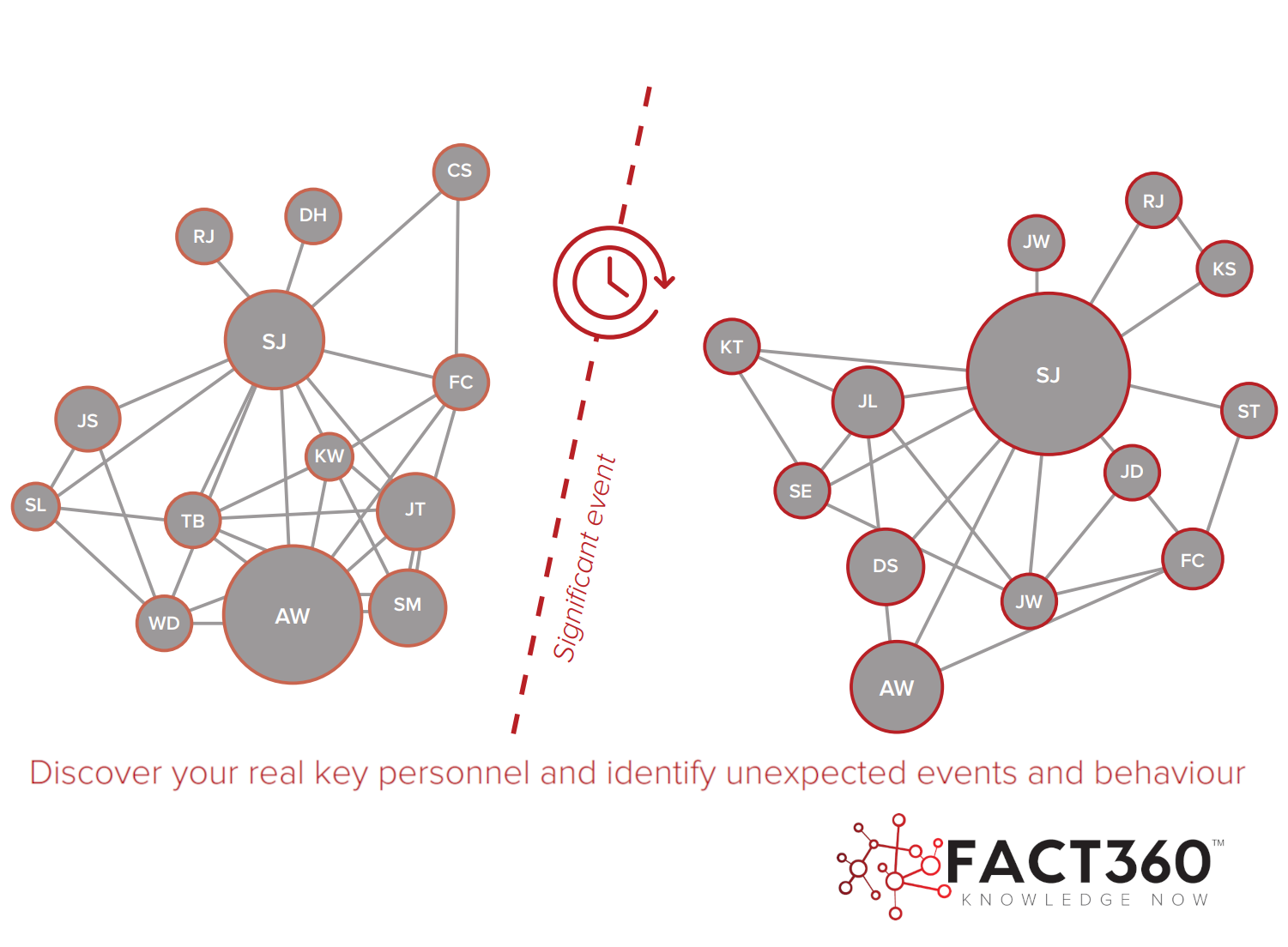HR Tech Talks: identifying the people that make a real difference to organisational performance
HR TECH TALKS...
Siân Harrington, editorial director and co-founder of The People Space, talks to Paddy Lawton, co founder at FACT360, about the role technology plays in helping organisations identify the people that make a real difference to company performance, how organisational network analysis can help HR make more informed decisions and how 'secret patterns' in communication can act as an early warning sign for HR
The challenge
Do you know which of your employees are the real influencers in your organisation? Do you know the individuals that are limiting company performance? What about that employee you have earmarked for redundancy – are you sure she is not an essential cog in the operation? And are you able to spot harassing behaviour or fraudulent activities early?
The traditional way of looking at your organisation, for example through an organisation chart, fails to capture the complex web of interaction among your workforce. This can lead to blunt decisions that can damage the organisation. Take redundancy for example. Without having an accurate picture of the organisation network, how can you be sure that you are not getting rid of people that keep information flowing smoothly? Such people may very well not be on the organisation chart or visible at all to the executive but play a vital role in the performance of your company.
Organisational network analysis, or ONA, is a way of uncovering and making visible critical connections and patterns between individuals and groups in an organisation. By analysing emails and other communication methods, it can build a picture of the nature of connections and effectively ‘join the dots’. It shows you who is speaking to whom and when they are saying it.
So, for example, using ONA you could have got an accurate picture of your organisation pre and post lockdown and discovered whether there have been any fundamental changes in how people are communicating that may point to issues such as increased employee anxiety. Or, if you want to assemble a team for a particular project you can discover who in the organisation would be most likely to have the biggest impact and bring them together collaboratively.
By creating an accurate organisational model based communication flows HR leaders can establish a fact-based approach for strategic decisions, such as specifying key person insurance cover. And you can identify, without bias, the key people who contribute significantly to the smooth running of an organisation who if unable to work have a disproportionately a high impact on operational capabilities – therefore reducing preventable risk.
Why this tech is different
Analysing information flows produces insights that are impossible to achieve in other ways. The techniques used by FACT360 are inspired by Gordon Welchman’s renowned work at Bletchley Park during the Second World War analysing enemy communication patterns. His analysis shows it is possible to gain valuable insight from analysing communication flows without knowing the content of messages themselves.
What’s interesting about FACT360 Prestige is that it uses unsupervised machine learning. So whereas artificial intelligence will find what you have trained it to look for, with unsupervised machine learning you don't tell it anything. Instead you just give it the full body of data – say three years of emails – and it will check for anomalies, things that look ‘weird’. This means it spots things that you have no idea about – and there is no human bias introduced.
Prestige identifies key employees by assigning a value to each person based on the volume of communication and status of the individuals with whom they are communicating. This value is a proxy for the ‘prestige’ of each employee and is tracked in real-time, giving organisations a dynamic model of its workforce and the key individuals. Think of it a bit like a Google ranking, whereby lots of pages pointing to an individual page pushes it up the Google ranking, only in this case it is an individual’s ‘ranking’. Organisations can in turn use this fact-based model to make rational strategic decisions.
This insight can be gained without analysing the content of the emails themselves. Rather, it’s about communication flows. So it is totally GDPR compliant. And the interface has been designed with customisable graphic displays to make the results of the analysis accessible and the platform easy to use.
Benefits to HR
The organisational complexity within large businesses make it challenging, if not impossible, for senior management to have compete visibility of their staff. Traditional methods for modelling organisations and analysing individual performance are slow and have a high potential for bias meaning the results are often skewed and do not reflect reality. Consequently, the most effective people and key networks of people are never identified.
As outlined above, there are many cases where using this technology can benefit HR. But perhaps one of the most interesting is that the system can act as an ‘early warning system’ by automatically identifying sudden and dramatic changes in communication behaviour.
FACT360 can also drill deeper into the email content in cases where this would not contravene data regulations, for example HR investigations. So, rather than spending hundreds of hours trawling through emails and messages, the technology can uncover hidden lines of enquiry or analyse email content to find evidence of bullying, racism, sexism or fraud.
But don't just take our word for it...
Oculus Financial Intelligence
“Prestige has saved us thousands of pounds in work-hours and provides insights that we wouldn’t have previously uncovered. When used in conjunction with FACT360 Forensics it is incredibly powerful”

What the company says
FACT360 uses leading-edge AI and unsupervised Machine Learning algorithms to find the critical information that exists in communication networks. Our technology means it is not even necessary to examine the content of emails and we can identify the real key personnel within an organisation based on what people actually do rather than what people say.

